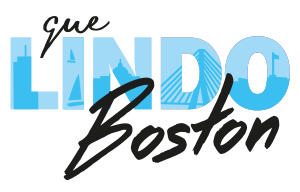Miren Uriarte
Educational Policy, Social Policy, Latino Studies
Miren Uriarte immigrated to the United States from Cuba with her family in 1961 and settled in Miami. She moved to Boston in 1973 to attend Boston College Graduate School of Social Work and worked as a clinical social worker in Boston. Uriarte earned a PhD in sociology from Boston University and began teaching at the College of Public and Community Service at UMass Boston in 1981. She is the founding director of the Mauricio Gaston Institute for Latino Community Development and Public Policy at UMass Boston.
I usually laugh when people talk about Latinos being a new group in the Boston area. We are not. Latinos have lived in Boston for more than a century. There was a strong presence of Puerto Ricans and Cubans in Boston from the late 1800’s. In fact, Jose Marti mentioned in his writings that groups of Puerto Ricans and Cubans organized in Boston in support of the struggle for the islands’ independence from Spain.
Puerto Rican migration has been the main story of the Latino community in Boston. In the 1950’s when the Puerto Rican economy deteriorated – particularly the agricultural sector- farmers were recruited to work in the Western part of Massachusetts. Puerto Ricans became the main group of people working on the farms. In the1960’s, industries in Boston began to actively recruit Puerto Ricans. There is evidence of people getting paid to go to the island to recruit workers. The Puerto Rican population settled primarily in the South End where IBA (Inquilinos Boricuas en Acción) is now located. But it was a very different neighborhood then; it was very poor. Then Puerto Ricans moved to Jamaica Plain and Roxbury.
In the 1980’s and 1990’s, we had an explosion of other Latino groups arriving in the city: Dominicans. Central Americans, Mexicans, Colombians. There was no single migration movement; there were many. Each group had their own reason for coming and their own experience as a group once they arrived. Economic transformations in the islands fueled the continued arrival of Puerto Ricans and Dominicans. Refugees came to Boston from Cuba and as a result of the wars in El Salvador and Nicaragua. Violence brought Colombians to our city. People have had to make very difficult choices personally, politically and economically. People never want to leave their country. They have a lot of pressure to do so for economic reasons, political reasons or war. People leave their countries to work, to make their lives better, and to provide a better life for their children.
For a longtime the Latino population in Boston was nearly invisible. People did not recognize just how big the Latino population was becoming. But as the population grew, Latinos have challenged Boston’s racial and cultural perspective. Boston was used to seeing itself as a black and white city but now here was a new group with its own racial characteristics and its own language and culture.
Latinos are a multi-national and multiracial group. Among Latinos, along with the different nationalities and cultures, you have people who are black, white and native people all coexisting, all merging as part of our Latino families and our Latino communities. This long-term multiracial experience is quite different from the experience in the United States, where a Black/white dichotomy has been the predominant perspective. This polarity has had great consequences in Boston for multiracial groups such as Latinos, who may not easily fit this dichotomy. This was perhaps most evident, for example, during school desegregation crisis in Boston in the 1970’s, when some Puerto Rican children were bussed as “white” while others were bussed as “black” within the same family, without recognition of the multiracially within Latino families. I’m not saying that there is no racism among Latinos – there is – but intermarriage has been more frequent and longer standing among Latinos. We have a mixture of races in our families that the United States is only recently beginning to experience in significant numbers.
In the 1960’s, the Latino community of Boston was a poor community and more or less everybody was in the same boat. Now we have boats on many different paths. This makes it a lot more challenging to ensure that we’re all pulling in the same direction. We now have some Latinos at high levels in government, in social institutions and in universities, but the fact is that the majority of Latinos continue to live in poverty in the Boston area. In Boston, the public schools have the worst outcomes for Latino children whether they are English language learners or not. The health disparities affecting Latinos in the Boston area make our community very vulnerable. We owe it to ourselves and to our community to keep those in high positions accountable, no matter who they are.
But we cannot forget that Latinos remain very underrepresented in decision-making in government and in social and economic institutions in Boston. I recently collaborated in a study of the representation of Latinos on boards and commissions in Boston and found that it was “minimal” across the board. There have been Latino mayors in Lawrence but not in Boston. It’s not a welcoming place politically for Latinos.
When I think about the evolution of this community and the resilience of its people, I think about Maria Sanchez who went to the airport to pick up Puerto Ricans as they arrived, of Tony Molina and Carmen Pola who very early did so much work around the public schools. I also think of IBA as one of the greatest accomplishments of any community in the U.S. to get housing that is collectively owned by the community. It is really admirable.
People ask me, will there be young people willing to struggle in the same way or in different ways? There is no question in my mind that we have those future leaders in our community. I was a college teacher for a long time. I love young people and the energy they bring regardless of who they are. I see movement and I see conscience in the young population of our community. Every generation has their own goals, their own struggles and their own accomplishments. We need to make sure that we’re leaving behind a generation that is ready for the next set of struggles.
Boston is a great place. What I admire most is the resiliency and capacity for struggle across generations and across groups. It’s really admirable and I’m hoping it will continue.


